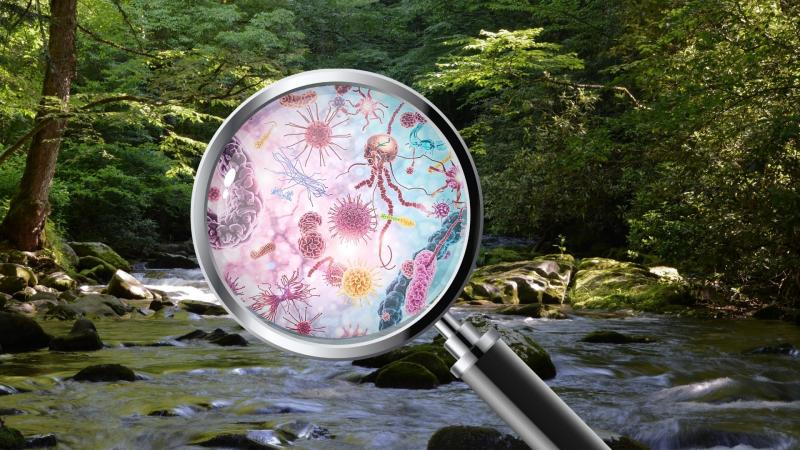
A new study applying the One Health lens has shown that, for some of India's most isolated communities, the fight against superbugs is being waged at the local stream level. Researchers from the Anthropological Survey of India and the University of Hyderabad have used metagenomic sequencing to profile the gut microbiomes of three Particularly Vulnerable Tribal Groups (PVTGs) in South India. The study shows that the source of drinking water is a key ecological driver of antimicrobial resistance (AMR).
Antimicrobial Resistance (AMR) is a growing global health threat, with over 300,000 lives lost each year since 1990 in India alone. It occurs when microorganisms, like bacteria, viruses, fungi, and parasites, evolve over time and no longer respond to medicines like antibiotics, antivirals, antifungals, and antiparasitics. This resistance is a natural evolutionary process, but it has been dramatically accelerated by human activities, primarily the misuse and overuse of antimicrobials in healthcare, agriculture, and veterinary care. The consequence is that infections can persist in the body, requiring more extended hospital stays, more expensive treatments, and often leading to increased disability and death.
Did You Know? Your gut microbiome—the trillions of bacteria living inside you—is a massive reservoir of genetic information, including genes for fighting off antimicrobial substances. This entire collection of resistance genes is called the resistome. |
For their study, the team worked with 103 healthy male and female volunteers from three PVTGs in South India: the Irula, Jenu Kuruba, and Kurumba communities, spanning the states of Tamil Nadu, Karnataka, and Kerala. Faecal samples were collected from healthy participants aged 20 to 40 years who had not received recent clinical antibiotic treatment. Along with the biological sample, structured socio-demographic information was collected, including drinking habits and water sources (stream vs. tubewell), as well as residential context (urban vs. rural). This non-biological data was critical for correlating lifestyle factors with the gut resistome results.
Microbial genomic DNA was extracted from the stool samples and subjected to high-throughput shotgun metagenomic sequencing, enabling the researchers to capture the entire genetic material (metagenome) of all microbes in the gut. The metagenome was then analysed to identify and quantify the specific antimicrobial resistance genes (ARGs).
The study showed a significant divergence in the gut resistome, the collection of all resistance genes, between individuals who drink untreated stream water and those who use tubewells. Stream water drinkers (SWD) showed a 1.18-fold higher overall AMR load compared to their tubewell-using counterparts. This elevation was not primarily due to traditional drug resistance, but rather attributed to genes acquiring resistance to metals, biocides, and other multi-compound agents. In contrast, those consuming tubewell water (TWD) showed greater dominance of genes that confer antibiotic resistance.
This pattern offers evidence for a phenomenon known as co-selection. Co-selection occurs when bacteria, under pressure from one stressor, like heavy metal contamination often found in untreated surface water, develop or acquire resistance genes that also, coincidentally, protect them against a different stressor, like antibiotics. In the tribal communities studied, where clinical antibiotic exposure is minimal, environmental co-selective pressures, particularly exposure to heavy metals in the stream water, are shaping the resistome dynamics. Essentially, the heavy metals and biocides from the environment act as a powerful selective force, promoting the survival and spread of resistance genes that could, in the future, render antibiotics ineffective. The gut of the stream water drinker becomes a repository for a broader, environmentally influenced pool of resistance.
The analysis confirmed that the gut resistome of tribal communities, who maintain a traditional lifestyle and have limited access to modern medicine, still contains a variety of AMR elements, including genes for drug, metal, biocide, and multi-compound resistance. The researchers also found that the resistomes of stream water drinkers were not only more abundant in non-drug resistance but also significantly more diverse. Measures of alpha diversity, which assess the richness and heterogeneity of the microbial community within an individual, were notably higher in the stream water group.
This also shows that the untreated water environment is fostering a broader, more complex spectrum of resistance mechanisms. For instance, stream water drinkers showed a significant enrichment of specific metal resistance mechanisms, including Zinc resistance protein, Copper resistance protein, and Multi-metal RND efflux pumps, all linked to non-drug categories. Conversely, the tubewell group's resistome was dominated by drug-resistance mechanisms, such as Macrolide-resistant 23S rRNA mutation and Aminoglycoside-resistant 16S ribosomal subunit protein.
The differences between the three tribal groups themselves were also pronounced, reflecting distinct local ecological and lifestyle factors. The Kurumba group, for example, exhibited the highest overall AMR burden, while the Irula group displayed the greatest diversity of non-antibiotic resistance classes. Across all groups, the resistance profile was dominated by multidrug efflux genes associated with bacteria such as Escherichia coli, underscoring the intrinsic adaptability of these common gut bacteria and their capacity to act as a central hub for resistance gene dissemination within the gut.
This work marks a significant step forward in understanding antimicrobial resistance, particularly in India. By focusing on marginalised tribal communities with limited access to modern health infrastructure, this study demonstrates that environmental factors, particularly untreated surface water, play a far more substantial role in shaping the resistome than previously considered. It provides the first comprehensive baseline of AMR in these particular vulnerable populations, supporting prior findings in Peruvian and Tanzanian cohorts who also showed higher AMR loads linked to untreated surface water exposure.
The findings from this study provide crucial evidence for a One Health intervention strategy, underscoring the urgency of safe drinking water provision. By demonstrating that environmental exposure to metals and biocides in untreated stream water is driving a diverse and enriched AMR gene pool, the research shifts the focus from purely clinical antibiotic misuse to systemic environmental contamination. Addressing poor water quality is now clearly defined as a frontline public health strategy against antimicrobial resistance.
This article was written with the help of generative AI and edited by an editor at Research Matters.





